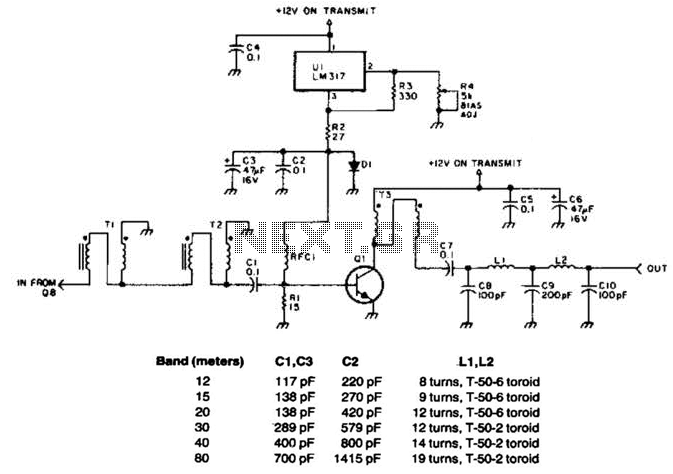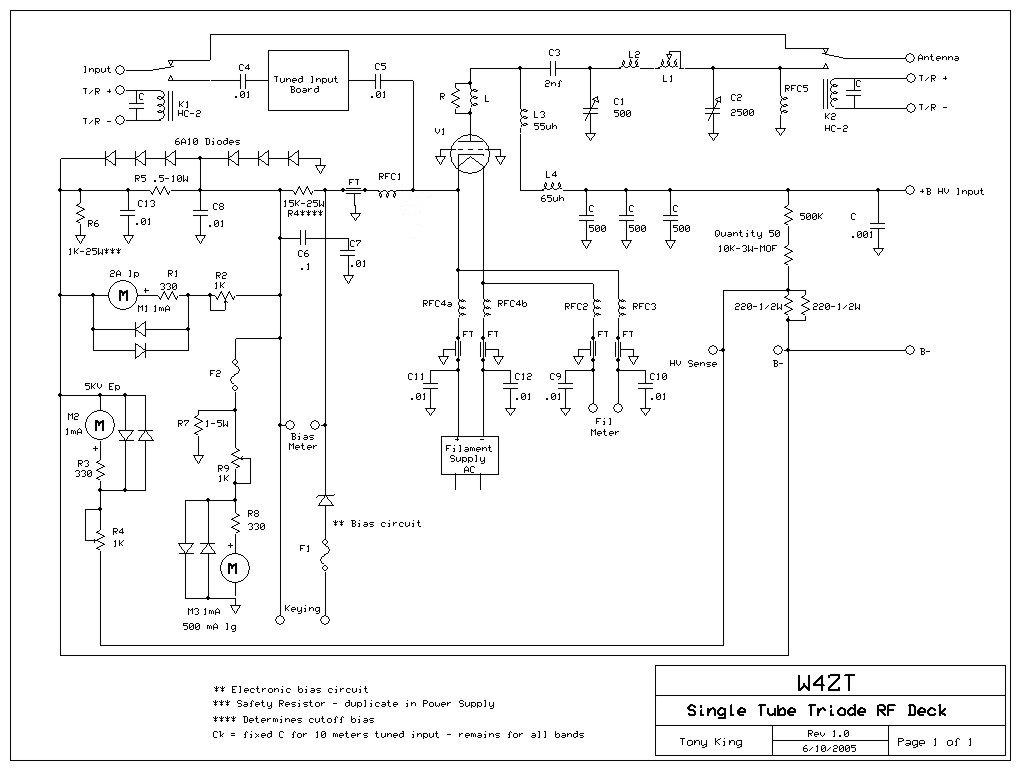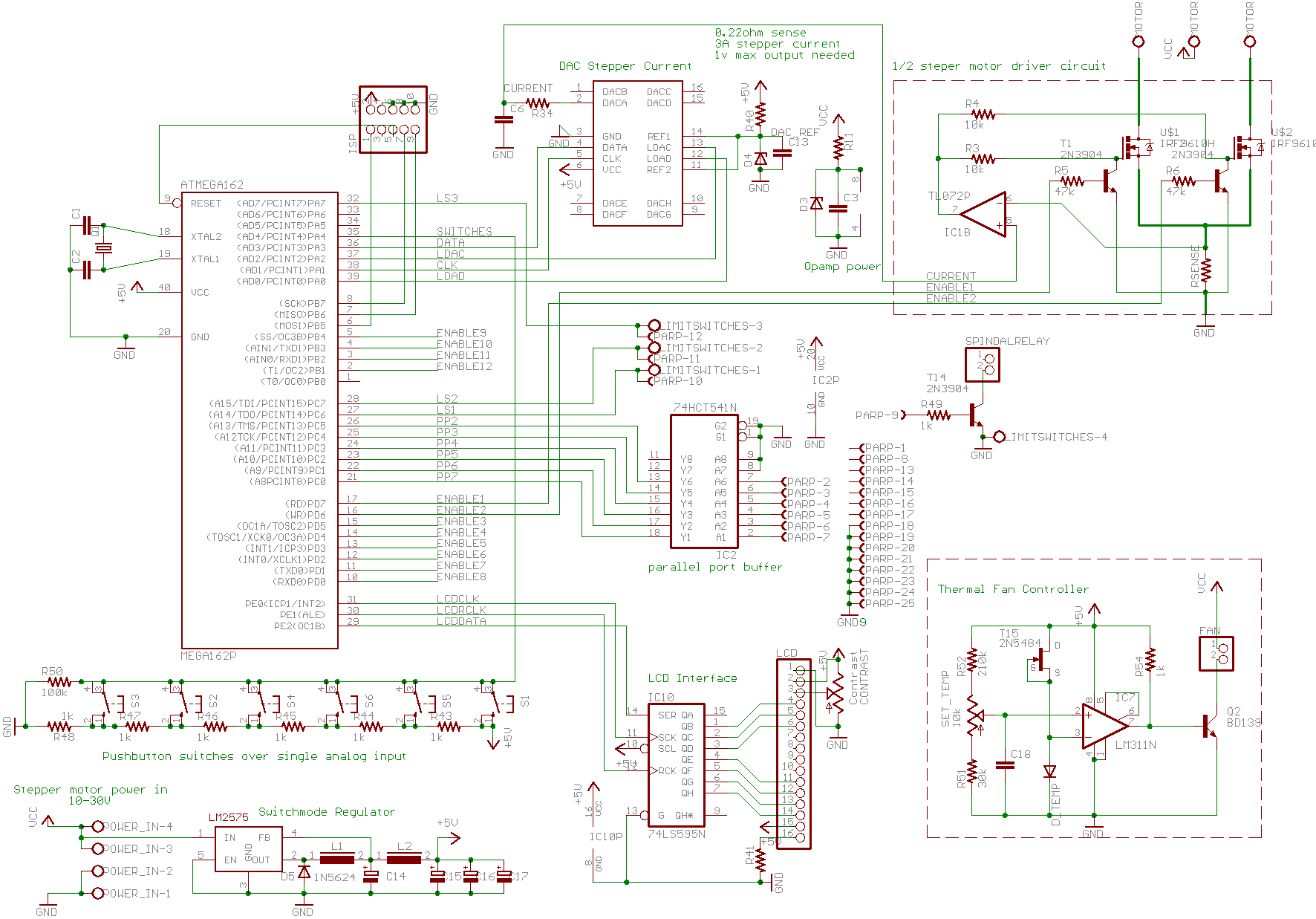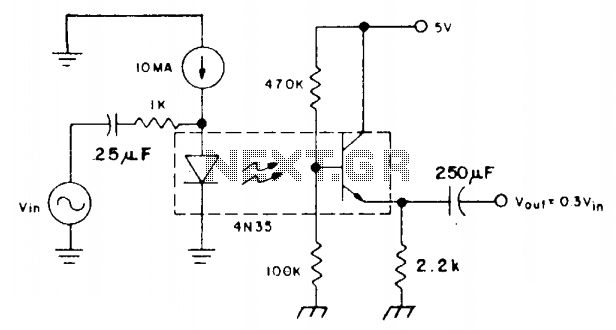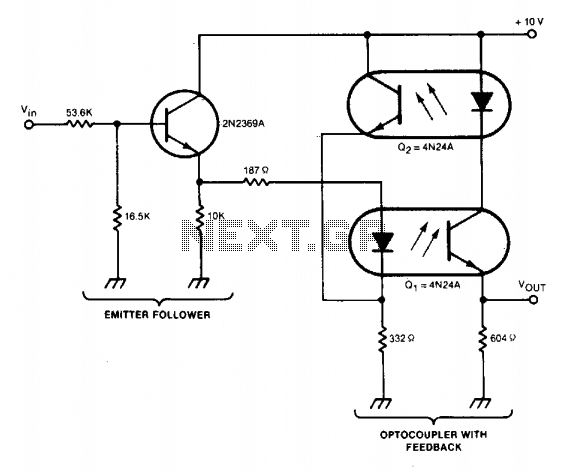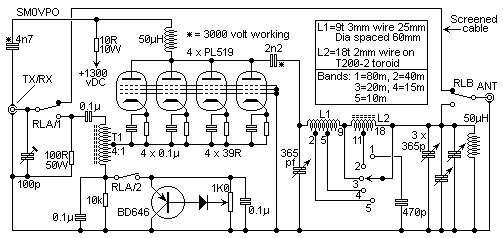
Dc linear coupler
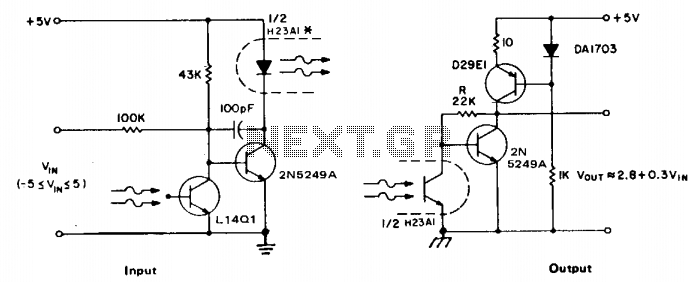
The accuracy of direct linear coupling of analog current signals through an optocoupler is influenced by the linearity of the coupler and its temperature coefficient. Implementing an additional coupler for feedback can enhance linearity, but only if both couplers are perfectly matched and identically biased. These conditions are often impractical in most equipment designs, necessitating an alternative design approach. A highly effective solution can be demonstrated using an H23 emitter-detector pair and an L14H4 optocoupler. The H23 detector and L14H4 are arranged such that both are illuminated by the H23 IRED emitter. Ideally, the circuit is mechanically configured so that the H23 emitter can be positioned to yield Vqut = 2-8 V when VIN = 0, ensuring collector current matching in the detectors. All three devices are secured in relation to one another. However, resistance (R) may be adjusted to achieve the appropriate null level, although this adjustment may worsen temperature tracking. It is important to note that the input bias relies on power supply voltage, while the output remains relatively stable against supply variations. Testing revealed that linearity exceeded resolution limits, attributed to alignment movement caused by using plastic tape for securing positions. The concept of feedback control of IRED power output is beneficial for both information transmission and sensing applications.
The circuit design focuses on achieving high accuracy in analog signal transmission through optocouplers, specifically utilizing the H23 and L14H4 components. The H23 consists of an infrared emitter (IRED) and a photodetector, while the L14H4 serves as a secondary optocoupler to enhance signal fidelity. The arrangement is critical; both the H23 and L14H4 must be aligned such that the light emitted by the H23 IRED effectively illuminates the L14H4 detector. This configuration aims to achieve a collector current that matches across both detectors, thereby improving linearity in signal transmission.
In practical implementations, the circuit should allow for mechanical adjustments to the positioning of the H23 emitter to maintain the output voltage (Vqut) within the specified range of 2-8 V when the input voltage (VIN) is zero. This alignment is crucial for ensuring that the detectors operate under identical conditions, thereby minimizing discrepancies that could arise from variations in temperature or biasing conditions.
Resistance (R) plays a significant role in fine-tuning the circuit for optimal performance. While it can be adjusted to achieve a desired null level, caution is warranted, as such adjustments may lead to poorer temperature tracking. This aspect is particularly important in environments where temperature fluctuations could impact circuit performance.
The stability of the output despite variations in the power supply voltage is another key feature of this design. This characteristic allows for reliable operation in diverse conditions, making the circuit suitable for a wide range of applications, including data transmission and sensor interfacing. Testing has demonstrated that the linearity of the circuit is superior to the resolution limits of the testing equipment, indicating the effectiveness of the design in maintaining signal integrity.
In conclusion, the described circuit exemplifies a thoughtful approach to overcoming the challenges associated with linear coupling of analog current signals using optocouplers, leveraging mechanical design and feedback control to enhance performance in practical applications.The accuracy of direct linear coupling of analog current signals via an optocoupler is determined by the coupler linearity and its temperature coefficient. Use of an additional coupler for feedback can provide linearity only if the two couplers are perfectly matched and identically biased.
These are not practical constraints in most equipment designs and indicate the need for a different design approach. One of the most successful solutions to this problem can be illustrated by using a H23 emitter-detector pair and a L14H4.
The H23 detector and L14H4 are placed so both are illuminated by the H23IRED emitter. Ideally, the circuit is mechanically designed such that the H23 emitter may be positioned to provide Vqut = 2-8 V when VIN = 0, thereby insuring collector current matching in the detectors. Then all three devices are locked in position relative to each other. Otherwise, R may be adjusted to provide the proper null level, although temperature tracking should prove worse when R is adjusted.
Note that the input bias is dependent on power supply voltage, although the output is relatively independent of supply variations. Testing indicated linearity was better than could be resolved, due to alignment motion caused by using plastic tape to lock positions.
The concept of feedback control of IRED power output is useful for both information transmission and sensing circuitry.
The circuit design focuses on achieving high accuracy in analog signal transmission through optocouplers, specifically utilizing the H23 and L14H4 components. The H23 consists of an infrared emitter (IRED) and a photodetector, while the L14H4 serves as a secondary optocoupler to enhance signal fidelity. The arrangement is critical; both the H23 and L14H4 must be aligned such that the light emitted by the H23 IRED effectively illuminates the L14H4 detector. This configuration aims to achieve a collector current that matches across both detectors, thereby improving linearity in signal transmission.
In practical implementations, the circuit should allow for mechanical adjustments to the positioning of the H23 emitter to maintain the output voltage (Vqut) within the specified range of 2-8 V when the input voltage (VIN) is zero. This alignment is crucial for ensuring that the detectors operate under identical conditions, thereby minimizing discrepancies that could arise from variations in temperature or biasing conditions.
Resistance (R) plays a significant role in fine-tuning the circuit for optimal performance. While it can be adjusted to achieve a desired null level, caution is warranted, as such adjustments may lead to poorer temperature tracking. This aspect is particularly important in environments where temperature fluctuations could impact circuit performance.
The stability of the output despite variations in the power supply voltage is another key feature of this design. This characteristic allows for reliable operation in diverse conditions, making the circuit suitable for a wide range of applications, including data transmission and sensor interfacing. Testing has demonstrated that the linearity of the circuit is superior to the resolution limits of the testing equipment, indicating the effectiveness of the design in maintaining signal integrity.
In conclusion, the described circuit exemplifies a thoughtful approach to overcoming the challenges associated with linear coupling of analog current signals using optocouplers, leveraging mechanical design and feedback control to enhance performance in practical applications.The accuracy of direct linear coupling of analog current signals via an optocoupler is determined by the coupler linearity and its temperature coefficient. Use of an additional coupler for feedback can provide linearity only if the two couplers are perfectly matched and identically biased.
These are not practical constraints in most equipment designs and indicate the need for a different design approach. One of the most successful solutions to this problem can be illustrated by using a H23 emitter-detector pair and a L14H4.
The H23 detector and L14H4 are placed so both are illuminated by the H23IRED emitter. Ideally, the circuit is mechanically designed such that the H23 emitter may be positioned to provide Vqut = 2-8 V when VIN = 0, thereby insuring collector current matching in the detectors. Then all three devices are locked in position relative to each other. Otherwise, R may be adjusted to provide the proper null level, although temperature tracking should prove worse when R is adjusted.
Note that the input bias is dependent on power supply voltage, although the output is relatively independent of supply variations. Testing indicated linearity was better than could be resolved, due to alignment motion caused by using plastic tape to lock positions.
The concept of feedback control of IRED power output is useful for both information transmission and sensing circuitry.
